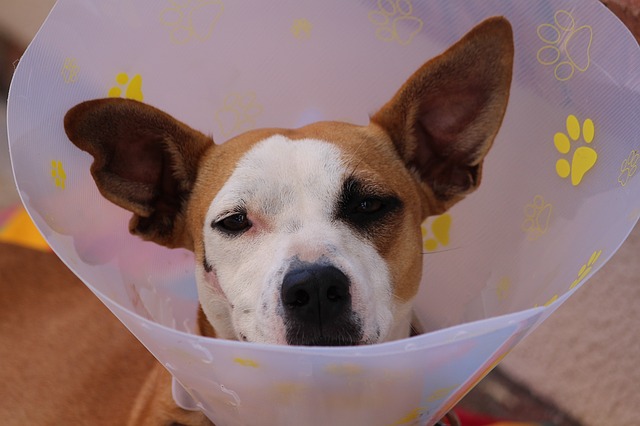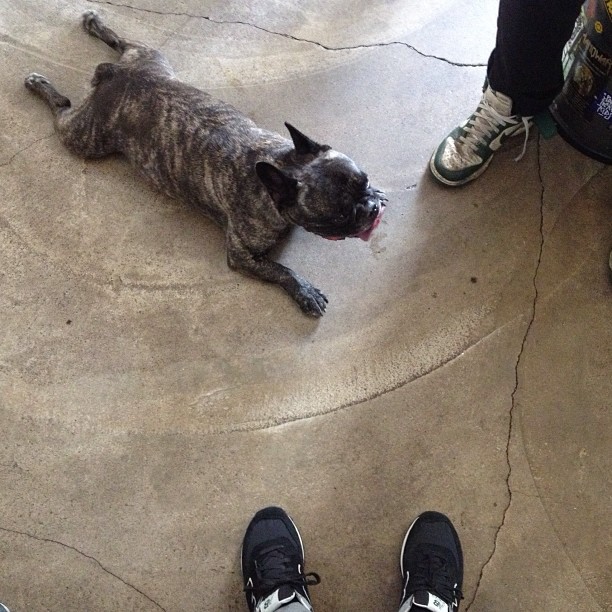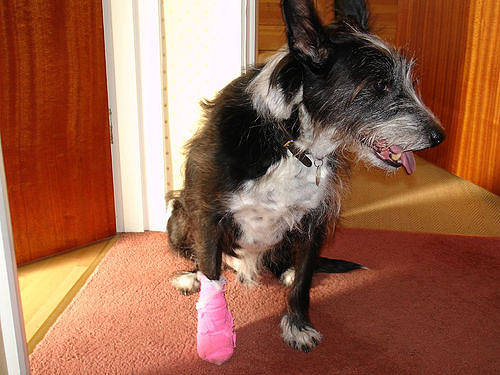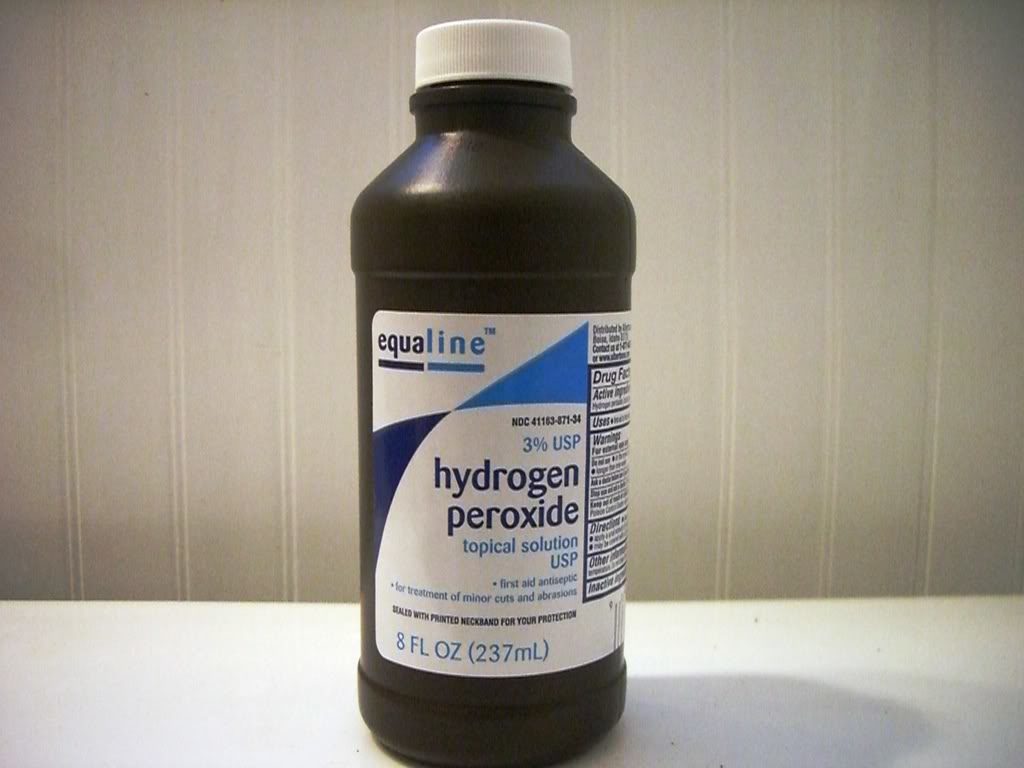Everyone knows that if there is something wrong your dog, you need to take him to the vet. But there are times when you are unable to get there, or when it might be too late by the time you arrive.
For these times, it’s good to know some basic Dog First Aid, which could prevent further injury or even death until you can make it to your veterinary’s office. Dr. Carol Osborne, DVM, is a world-renowned integrative veterinarian and author. She provided the following information on basic Dog First Aid that every dog owner should know.

What do you do if your dog stops breathing?
Dr. Osborne:
Don’t panic. If there are 2 people present, have 1 person call your vet or the nearest emergency facility immediately. The second person, if versed in the ABC’s of CPR, can begin to provide CPR.
“A” stands for Airway: position the dog so he is lying on his side with the head extended to keep an open airway. Carefully check his mouth and throat with a swipe of the hand to clear anything that may be stuck or lodged in the mouth and/or throat that can be easily removed.
“B” stands for Breath. Tilt the head slightly back and breathe for the dog using the same 30:2 ratios as for people. 30 chest compressions followed by 2 breathes. Be sure to close their mouth and breathe into their nose, and apply chest compressions. The exact ratio varies depending on the dog’s size.
“C” stands for Circulation. Regardless of your choice, proceed to the nearest vet ASAP.
How do you perform the Heimlich Maneuver for dogs?
Dr. Osborne:
The Heimlich Maneuver should only be used on dogs if you are sure there is something lodged in his throat that you can’t see or remove. The process is very similar to that used on people.
The Heimlich procedure for both large & small dogs:
- Kneel behind the dog, so the dog is facing away from you.
- Place your arms around the dog’s waist/abdomen.
- Use the knuckles of one hand and place them just below your dog’s last set of ribs on the soft part of the abdomen.
- Place your other hand flat on the dog’s back to keep him steady.
- Give a quick, hard poke with your knuckles.
- Press in and up four to five times gently, in a thrusting motion–but no more than four to five times.
- Check the dog’s mouth and remove any objects that may have been dislodged during the procedure.

Note: If the dog is lying down, place one hand on the back for support and use the other hand to squeeze the abdomen up and forward.
What do you do if your dog gets too cold?
Dr. Osborne:
Temperatures below 20 degrees Fahrenheit are too cold for most dogs. Cold weather can cause frostbite and sub-normal body temperatures, called hypothermia. The areas most susceptible to frostbite are the extremities:
- Nose
- Toes
- Ear tips
- Tail
Frostbitten tissues turn a grayish-white color and require gradual re-warming. Don’t rub or irritate frostbitten tissue as that creates further trauma.

How do you safely raise your dog’s body temperature?
- Give the dog a lukewarm bath and offer warm fluids like unsalted chicken broth.
- Next, wrap him in a blanket – heat retaining blankets are a good idea.
- Take your dog to the vet, asap.
What do you do if your dog overheats?
Dr. Osborne:
Remember dogs DO NOT SWEAT, as they have underdeveloped sweat glands located in their foot pads. This is why dogs pant, to cool down and lose heat. Be smart when summer temperatures are on the rise.
- Walk your dog in the early morning and later evening. Be sure to avoid peak temperatures by not walking your dog during the heat of the day.
- Learn to read your dog’s body language. When your dog is not walking well ahead of you, it means he or she has had enough. It’s the way your dog tells you he is tired and ready to go home.
- Remember you still have to turn around and walk home, so judge your walking distance accordingly.

If you suspect your dog is getting overheated:
- Hose his body down with cool water, soaking the head first.
- Offer cool water.
- Proceed to the nearest emergency clinic.
You can follow these tips to avoid a heat stroke:
- Use a self‐cooling vest for dogs, like the Ruffwear Swamp Cooler. Soak the vest in water for a couple minutes and it’ll help keep your pup cool for up to 4 hours.
- Get your dog a “kiddie pool” where he can cool himself down as often as needed.
- Make sure he has access to fresh, cool drinking water at all times, whether a dog bowl, water bottle, or doggie water fountain.
What’s the best way to treat a minor dog wound?
Remove hair with clippers, if necessary, before cleaning the wound with antibacterial scrub.
- Dab the wound with rubbing alcohol.
- Bandage if needed. If the wound is deep, cover it and proceed to your vet for treatment and stitches.
- The wound should always be kept clean and free of dirt and debris.
Small wounds generally heal in a few days.

What if your dog ingests something dangerous?
Dr. Osborne:
Call the nearest emergency facility and tell them what the dog has swallowed to see if you can safely induce vomiting.
To make a dog vomit, you can give him hydrogen peroxide by mouth every 15 minutes, up to 3 times.
The exact dose varies with the dog’s body weight, so call a vet or the hotline below to get accurate dosage. Generally, vomiting is effective to remove foreign objects if ingested within 2-3 hours. If not, it is best to go to your veterinarian or local emergency facility.
Also, have this number posted in a convenient location or programmed into your phone–it can literally be a lifesaver:
Animal Control Poison Center Hot Line: 1-888-426-4435

Always keep these emergency phone numbers handy:
- Your pet’s vet
- Closest emergency vet (preferably 24-hours)
- Animal Control Poison Center Hot Line: 1-888-426-4435
It’s scary to think about, but the better prepared you are for an emergency situation, the better the outcome is likely to be!
